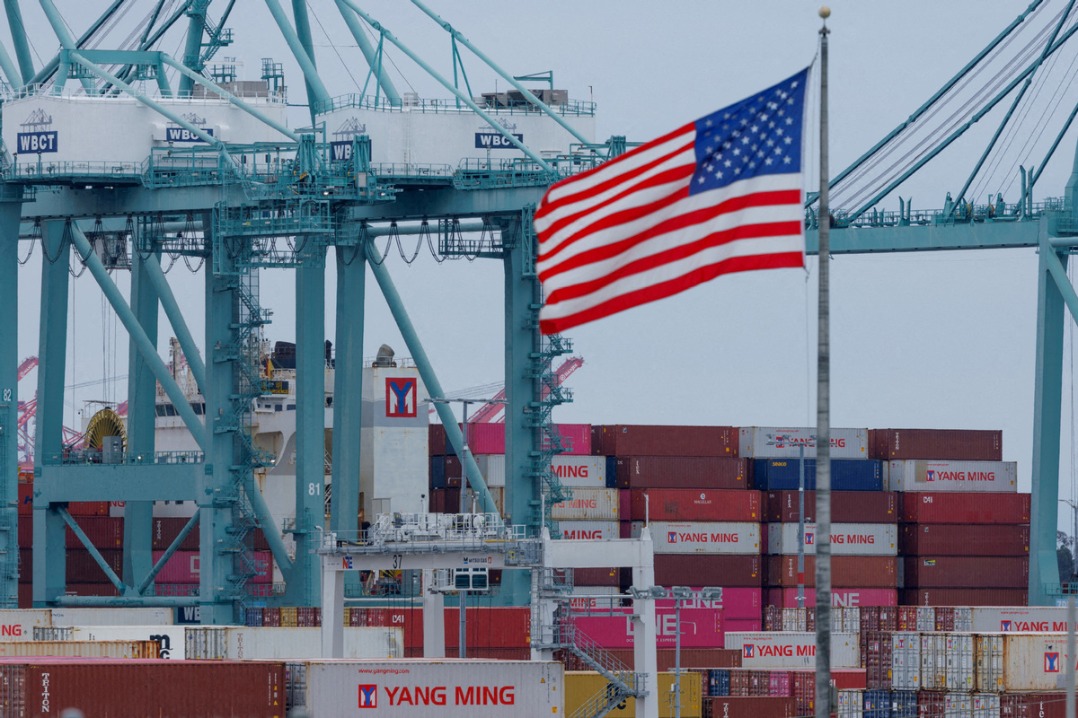Service trade a key to further opening-up

On Tuesday, President Xi Jinping vowed to further deepen reform and opening-up, including giving easier access to investment and promoting financial cooperation. These measures will also boost service trade amid escalating Sino-US trade dispute. And even if the measures are needed to facilitate China’s sustainable development, they will also help reduce trade frictions with other countries.
The ongoing trade dispute between China and the United States has also put the focus on service trade, in which the US has an annual surplus of about $50 billion — a fact that Washington has maintained a studied silence on.
The share of service trade in China’s total trade increased from 11.1 percent in 2012 to 15.1 percent in 2016, with intellectual property rights royalties, communications and information services, repair and maintenance services, and advertising and financial services registering the highest growth. But that is no reason for China to be complacent; instead, it should further develop its trade service in order to optimize its consumption supply structure, increase its industrial competitive advantage and expedite its technology accumulation.
The upgrading of service trade will also facilitate China’s further opening-up, optimize its trade structure, which is largely dominated by goods trade, and raise its status in the global free trade system.
China will gain greater say in the restructuring of global trade, as well as in making bilateral, multilateral and regional agreements on service trade, by increasing the share of its service trade in the world market. Enhanced service trade will also help China to more firmly counter the ill effects of unilateralism and protectionism.
If China maintains its growth momentum in service trade, by implementing opening-up policies, the annual trade value may hit $1 trillion by 2020, accounting for about 20 percent of its total trade .
To realize these goals as well as to capitalize on the fast rising service consumption, China should break the administrative monopolies in the service sector, and take measures to further open up its service market to investors from both home and abroad.
Generally speaking, Chinese companies engaged in the service sector lag behind other Chinese enterprises not only in “going global” but also in meeting the practical needs of the economies along the Belt and Road routes. In 2016, China’s service trade with the economies along the Belt and Road accounted for only 11.4 percent of its total trade with them. The need therefore is to promote closer industrial cooperation and service trade along the two routes.
Reforming China’s free trade zones, too, could boost service trade. Since about 70 of the 95 items on the negative list of the free trade zones are related to service trade, the expected reduction of the items on the negative list to less than 40 by 2020 will promote the further opening-up of China’s service trade market.
The government should also take measures to lower the entry threshold for the service sector and make new rules to integrate the sector with regional development so as to boost overall regional growth. The Guangdong-Hong Kong-Macao Greater Bay Area can take the lead in this regard and help the country to gain the upper hand in the global trade arena.
Guangdong’s gross domestic product is nearly three times that of Hong Kong, but the scale of its service trade is only 85 percent that of Hong Kong. As China’s eastern coastal region is more prosperous than other regions, it can lead the way in further opened up the service sector by becoming the first to shorten the negative list. Perhaps the central government can begin the process by piloting free trade service policies for the tourism, healthcare, cultural, education and financial sectors in the eastern region, with the ultimate aim of giving a shot in the arm to the service sector nationwide.
The author is a researcher at the China Institute for Reform and Development in Hainan province.


































